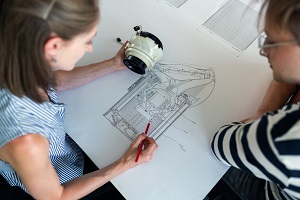Project voice and voice first technology

Recently, ‘Project Voice’ had an event. For those unfamiliar with project voice, their events focus around voice first technology and they self-describe as “the #1 event for voice tech and AI in America”. Incredible online conferences, says Joseph Zulick of MRO Electric and Supply, with new technology and new strategies for incorporating voice technology.
Growth has been exploding in the voice arena; 39.8% growth in one year! People are quickly adapting this Artificial Intelligence (AI) technology and improving their life experiences. With all of these new devices, so too are the growth prospects of voice applications.
Medical lead
Medical was a very important focus during this conference. Voice technology is very helpful when doctors and nurses’ hands are occupied performing procedures. The thought of being able to add additional options to record, detail, note are all great but the amazing part is the thought of adding automation, changing settings, moving an operating table up and down, or adding suction all by voice.
Think about how we interact with voice currently. Maybe you have a smart speaker in your home, and you use it to check weather, your schedule, raise the temperature in your room or even adjust lighting. These are just scratching the surface. If we think about places where your hands are indisposed, cooking in the kitchen and you need to look at a recipe, or are multitasking talking as you’re working on your car.
Go to the next level, the elderly, or handicapped without the use of their hands, this moves it from improving your life to a necessity of life! Imagine you need an automated chair to allow you to stand. Using your voice can change this aspect of someone who needs assistance to round the clock care. Many neurological diseases are incorporating a strategy to help patients with these health concerns. Parkinson’s is one of these that were in attendance and discussed their needs for patients. Making information available through voice applications is a new area being developed.
Let’s look at the average person’s commute. Commute times are increasing and with it the need for hands-free usage. Robert Bruchardt from Mercedes Benz discussed how voice is improving safety in vehicles by keeping your hands off your phone and eyes on the road. It is an opportunity for safety that we all can embrace to make roads safer. The conference highlighted similar strategies for vehicle driving challenges all the way down to food ordering apps.
You need to realise that voice-first strategy means that you have to combine direction “look up” or “find”, along with data, fettuccine Alfredo. It can make this a challenge and while it continues to improve, we need to do a better job training our technology. There are even companies who can test your technology and recognition without the need to go through the pain of customers becoming agitated with a poor interface or a bad interpretation program.
Companies were there speaking on integration between voice and manufacturing workplace like Jeff Adams from Cobalt, who had tremendous insight into the next phase of technology integration. Using voice instructions to operate robots and equipment is here today.
There were many ethical discussions and panels regarding AI and voice.
AI is becoming more important as part of a voice-first company interface. Artificial Intelligence is assisting with the voice comprehension aspect. Once the voice is received by the smart device microphone section of the device the understanding of the words is critical to the success of the program. Dr. Shamoon was presenting on the difficulty we have in communicating big ideas in just words. Below are two sample sentences which illustrate how easy it is to confuse programs by voice when we make assumptions. Our brains can understand these assumptions, but a computer does this through understanding the probability of what word or phrase you are wanting to convey.
The interface of choice
With the significant growth of smart speakers and now the mobile version you can put in your car, we are seeing more and more companies writing for these devices. Many people only see these as a hands-free device for convenience but in the same way as we have become dependent on our cell phones and they have become our go-to place for our data, searches, communication and access, the smart units are quickly becoming the interface of choice. By no means should we think of this as a replacement for other devices like our phones or tablets, it is instead a convenient method to interface with our devices.

The big picture for manufacturing and IoT is that these devices make interfacing with our current systems a bit more convenient when the application warrants a hands-free option, or in the case of many, when you need another hand. The designers of these devices are designing simpler programming interfaces so anyone can program using these devices. This open platform design has accelerated the app development. This is where many companies will find their niche in the future.
I can’t stress enough that we have proven historically that we will invest in convenience. We spend more on cell phones than we did 20 years ago with the new phones coming out at around $1,000 (€823.75).
Why? Do we need this to make a call?
No. But, because we are paying for the all-in-one service where the one device can perform all of the systems in one device. Can we do this currently? Echo can search, play music, show you pictures access the internet, update your calendar,

Joseph Zulick
make lists all by voice. Siri is another area that is expected to attain more utilisation but needs a bit of a push to make it a more open design so app makers will want to build for this service.
All of the big players were in attendance (Microsoft, Amazon, Google) so you know they see the long-term merit in designing for voice-first systems. Don’t sleep on voice-first.
Oh, that reminds me to set an alarm on my smart speaker.
The author, Joseph Zulick is a writer and editor at MRO Electric and Supply.
Comment on this article below or via Twitter @IoTGN
